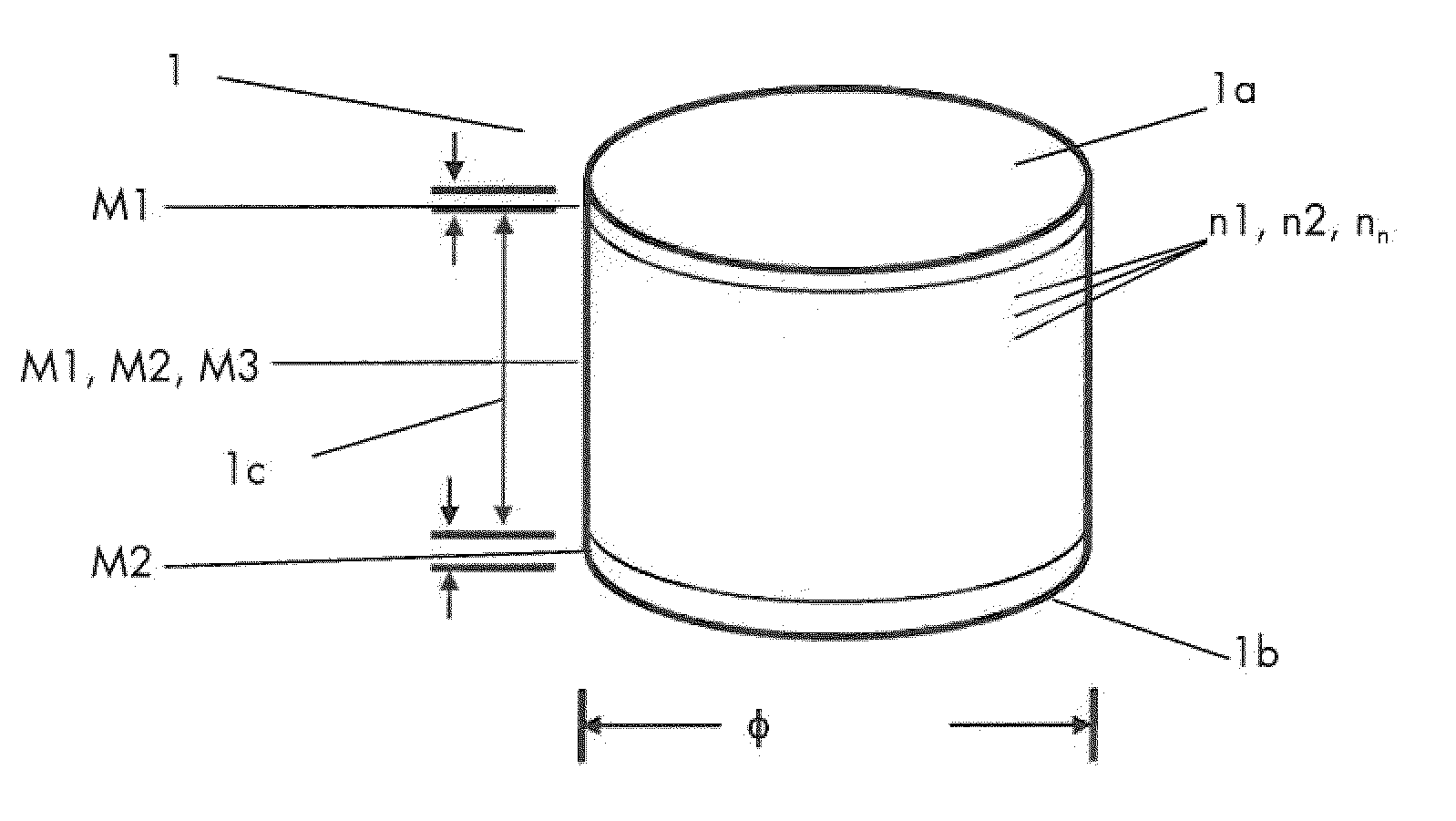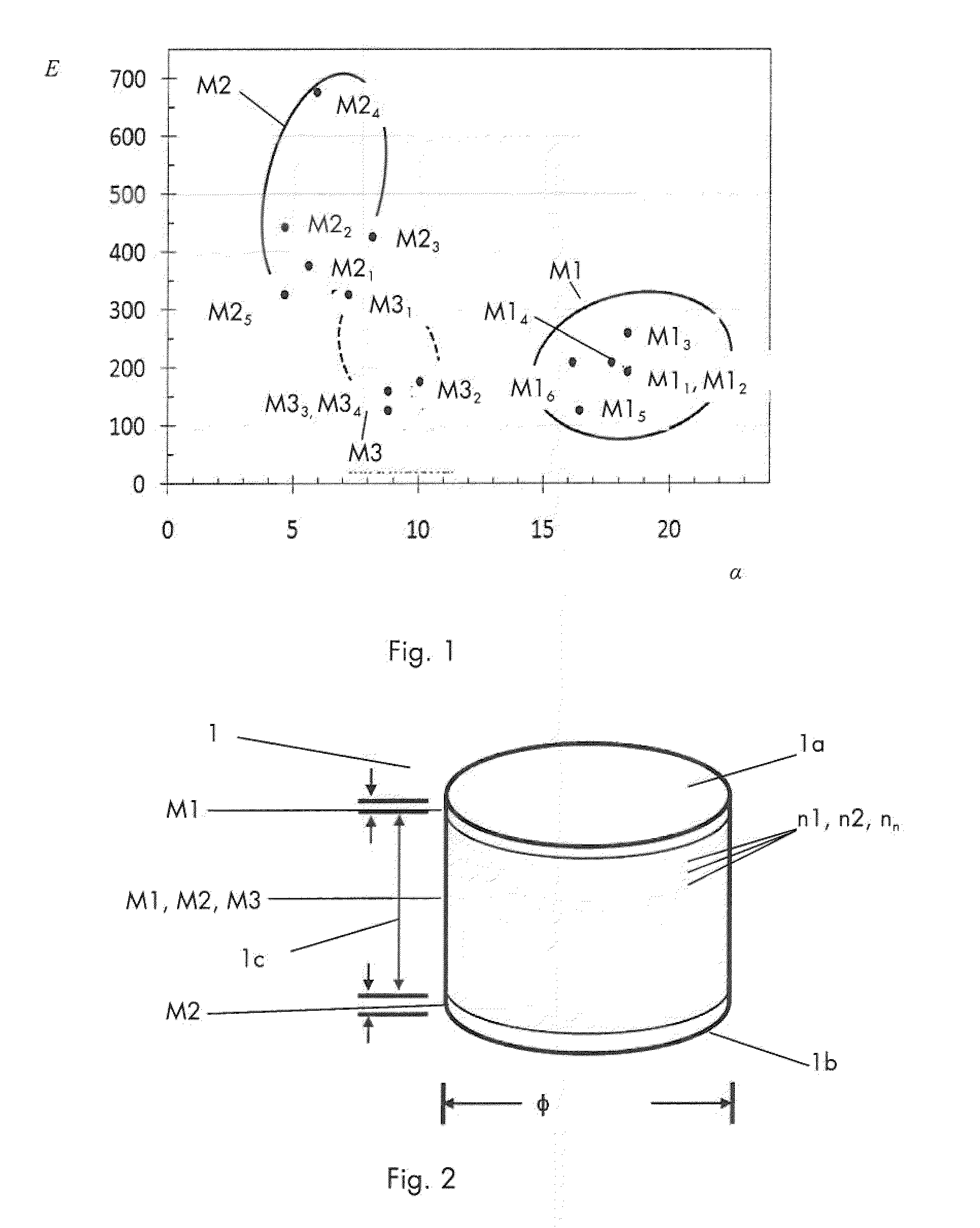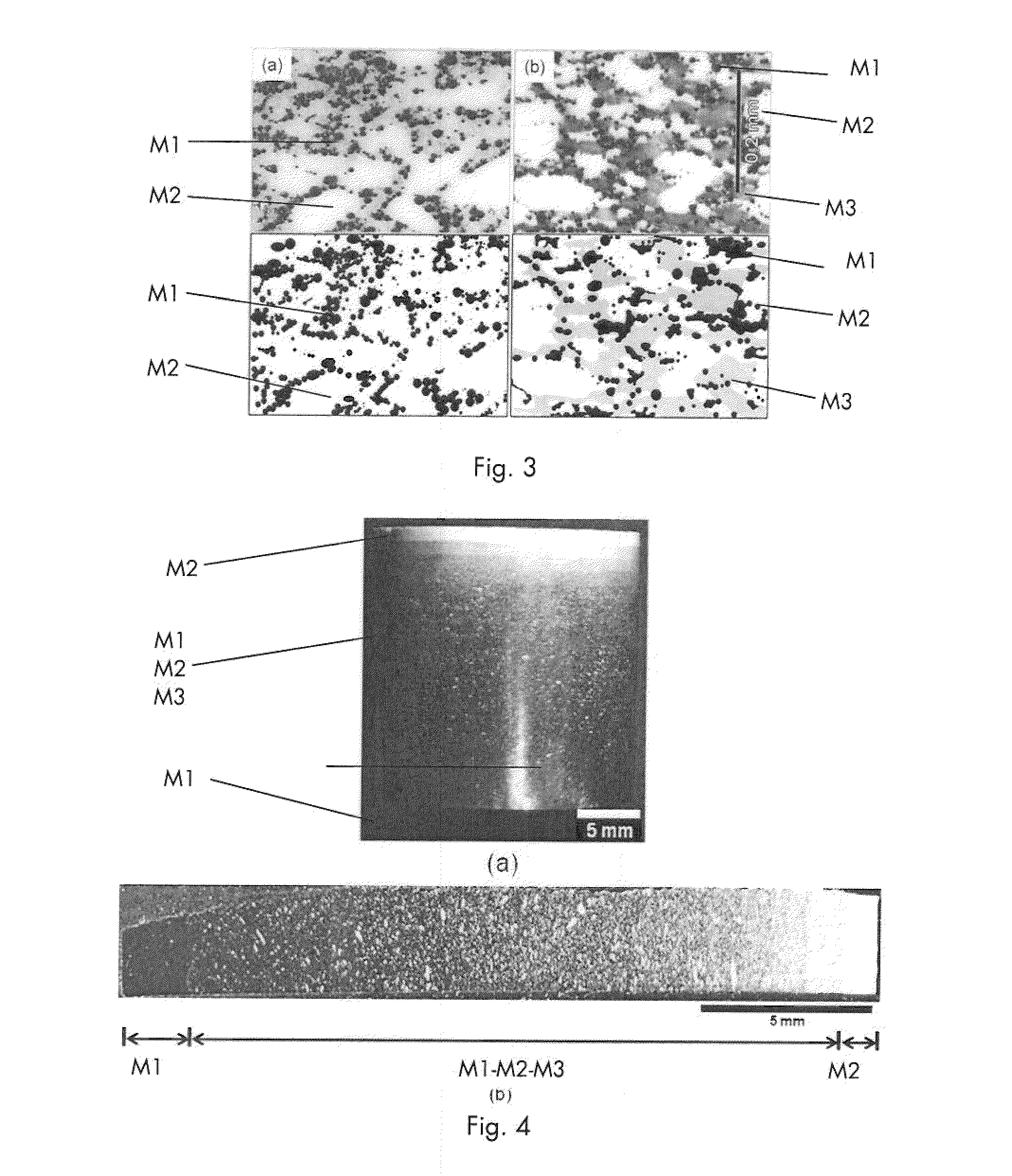Functionally graded material shape and method for producing such a shape
- Summary
- Abstract
- Description
- Claims
- Application Information
AI Technical Summary
Benefits of technology
Problems solved by technology
Method used
Image
Examples
example
[0064]A cylindrical-shaped FGM shape 1 of the first material M1, more specifically SUS316L and the second material M2, more specifically Al2O3, was prepared and is disclosed in the optical photograph in FIG. 4 showing: (a) the bulk dense FGM shape 1 with the different materials M1, M2, M3, and (b) the multilayers structure containing layers of different mixtures of the first, second and third materials M1-M2-M3. 21 different powder mixtures were prepared with the following compositions:
TABLE 1Vol %LayerM1- SUS316LVol % M2- Al2O3Vol % M3- ZrO2 (3Y)1100.00.00.0295.02.72.2390.05.54.5485.08.36.8580.010.98.9675.013.711.2770.016.513.5865.019.315.8960.022.018.01055.024.720.21150.027.522.51245.030.224.71340.033.027.01435.035.829.31530.038.531.51625.041.333.81720.044.036.01815.046.738.21910.049.540.5205.052.342.8210.0100.00.0
[0065]The 21 different mixtures were prepared through manual mixing of the dry powders of the first material M1 SUS316L (Micro-Melt® type 316L, D902O3 (100 nm, TM-DAR Ta...
PUM
| Property | Measurement | Unit |
|---|---|---|
| Temperature | aaaaa | aaaaa |
| Temperature | aaaaa | aaaaa |
| Time | aaaaa | aaaaa |
Abstract
Description
Claims
Application Information
 Login to View More
Login to View More - R&D
- Intellectual Property
- Life Sciences
- Materials
- Tech Scout
- Unparalleled Data Quality
- Higher Quality Content
- 60% Fewer Hallucinations
Browse by: Latest US Patents, China's latest patents, Technical Efficacy Thesaurus, Application Domain, Technology Topic, Popular Technical Reports.
© 2025 PatSnap. All rights reserved.Legal|Privacy policy|Modern Slavery Act Transparency Statement|Sitemap|About US| Contact US: help@patsnap.com



